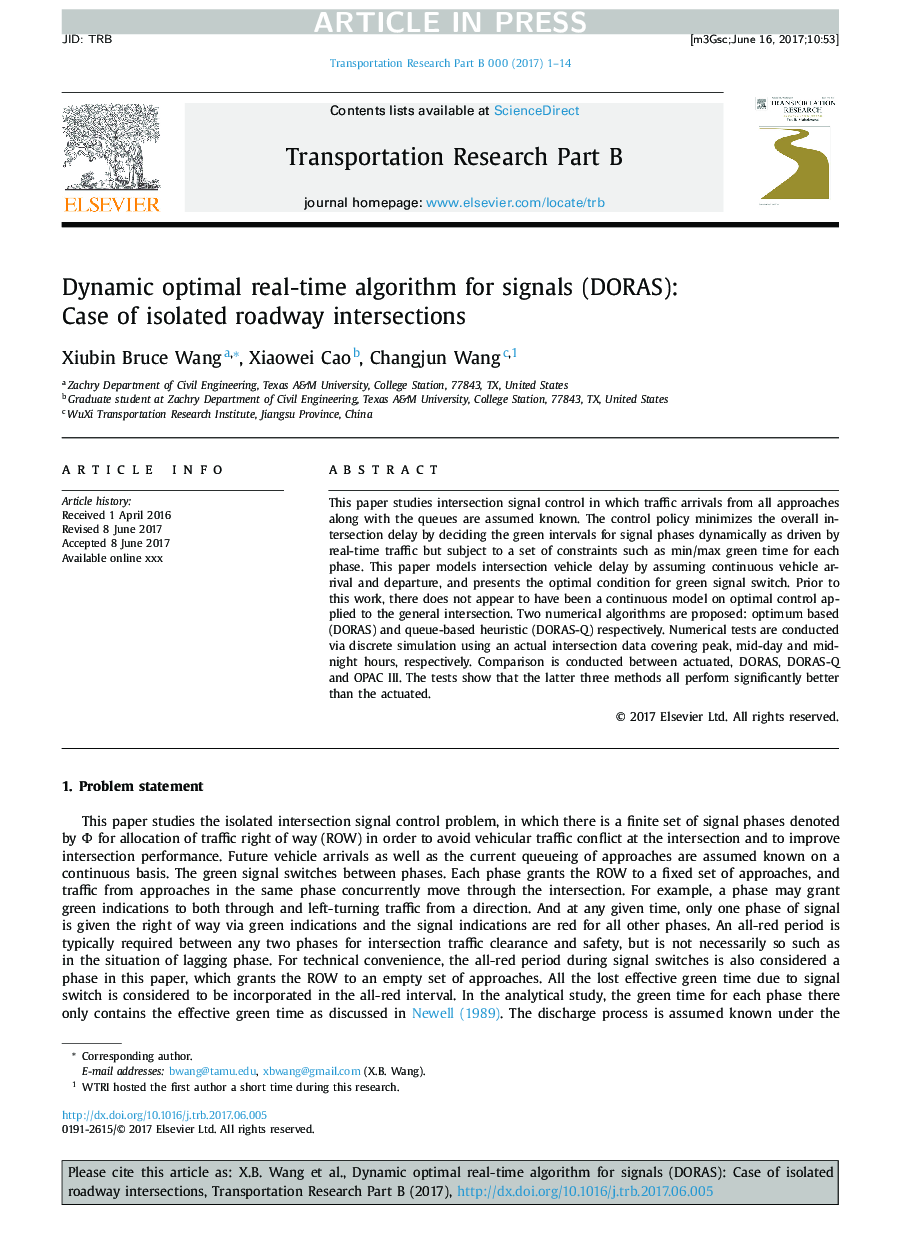| Article ID | Journal | Published Year | Pages | File Type |
|---|---|---|---|---|
| 7539389 | Transportation Research Part B: Methodological | 2017 | 14 Pages |
Abstract
This paper studies intersection signal control in which traffic arrivals from all approaches along with the queues are assumed known. The control policy minimizes the overall intersection delay by deciding the green intervals for signal phases dynamically as driven by real-time traffic but subject to a set of constraints such as min/max green time for each phase. This paper models intersection vehicle delay by assuming continuous vehicle arrival and departure, and presents the optimal condition for green signal switch. Prior to this work, there does not appear to have been a continuous model on optimal control applied to the general intersection. Two numerical algorithms are proposed: optimum based (DORAS) and queue-based heuristic (DORAS-Q) respectively. Numerical tests are conducted via discrete simulation using an actual intersection data covering peak, mid-day and mid-night hours, respectively. Comparison is conducted between actuated, DORAS, DORAS-Q and OPAC III. The tests show that the latter three methods all perform significantly better than the actuated.
Related Topics
Social Sciences and Humanities
Decision Sciences
Management Science and Operations Research
Authors
Xiubin Bruce Wang, Xiaowei Cao, Changjun Wang,
